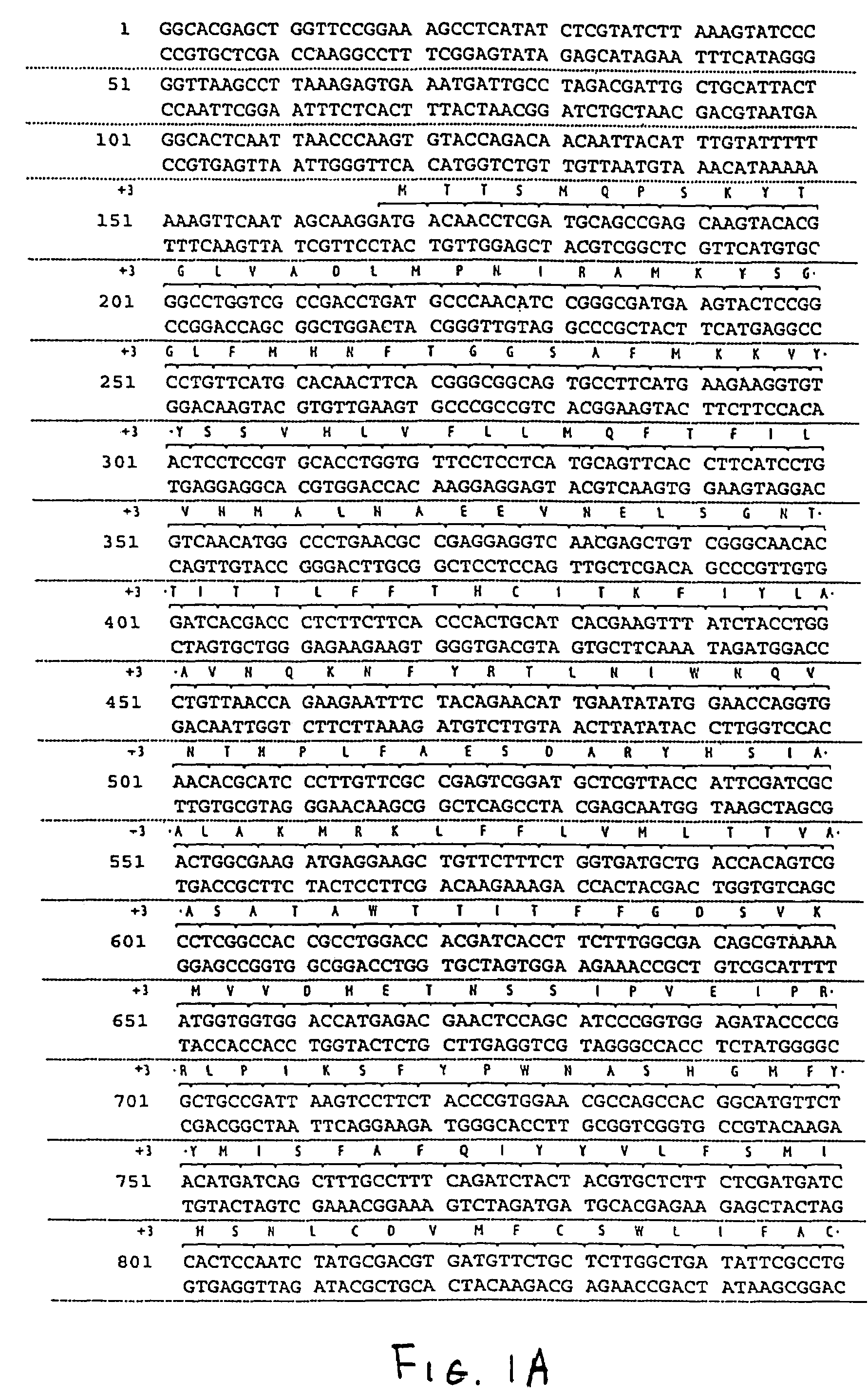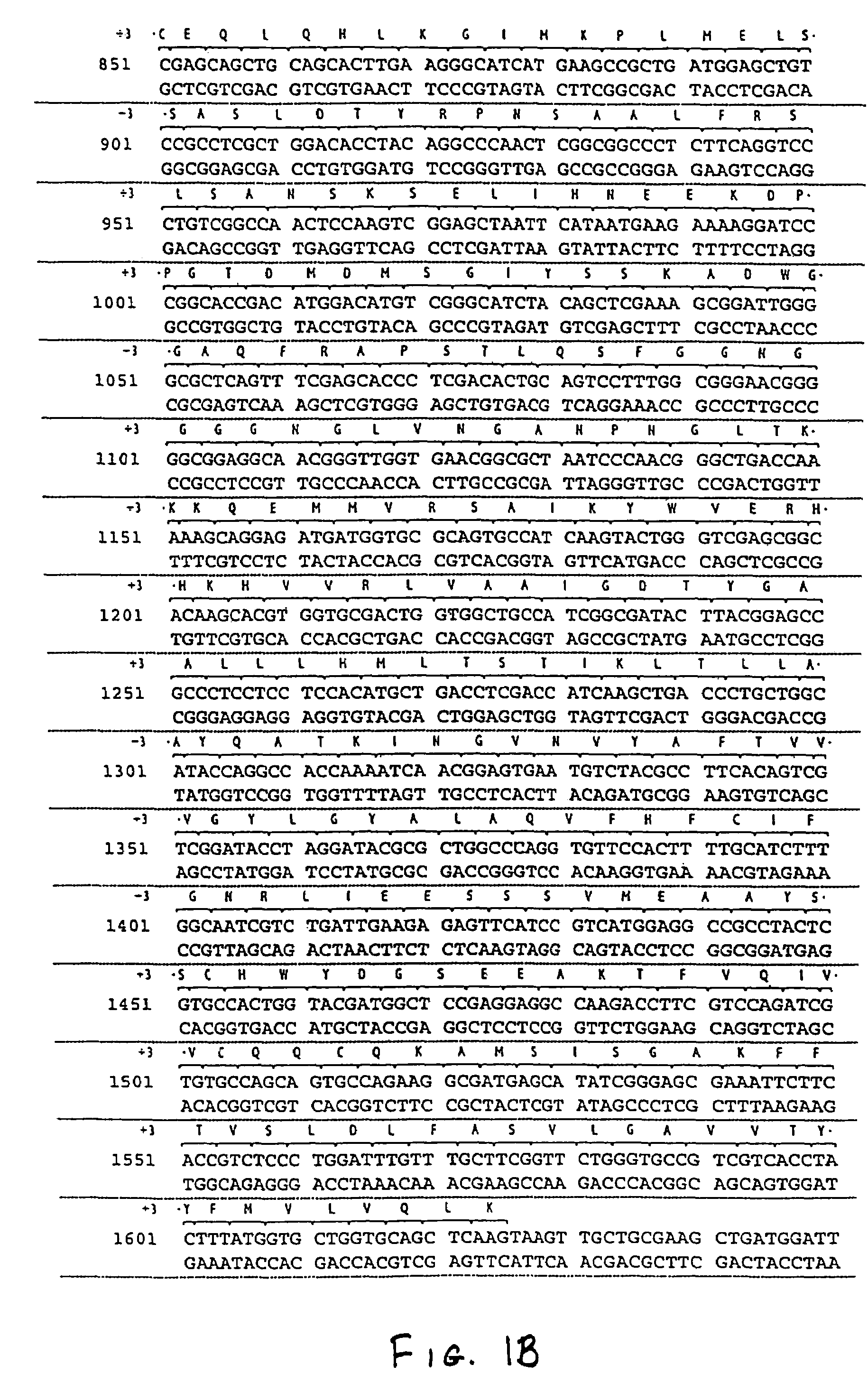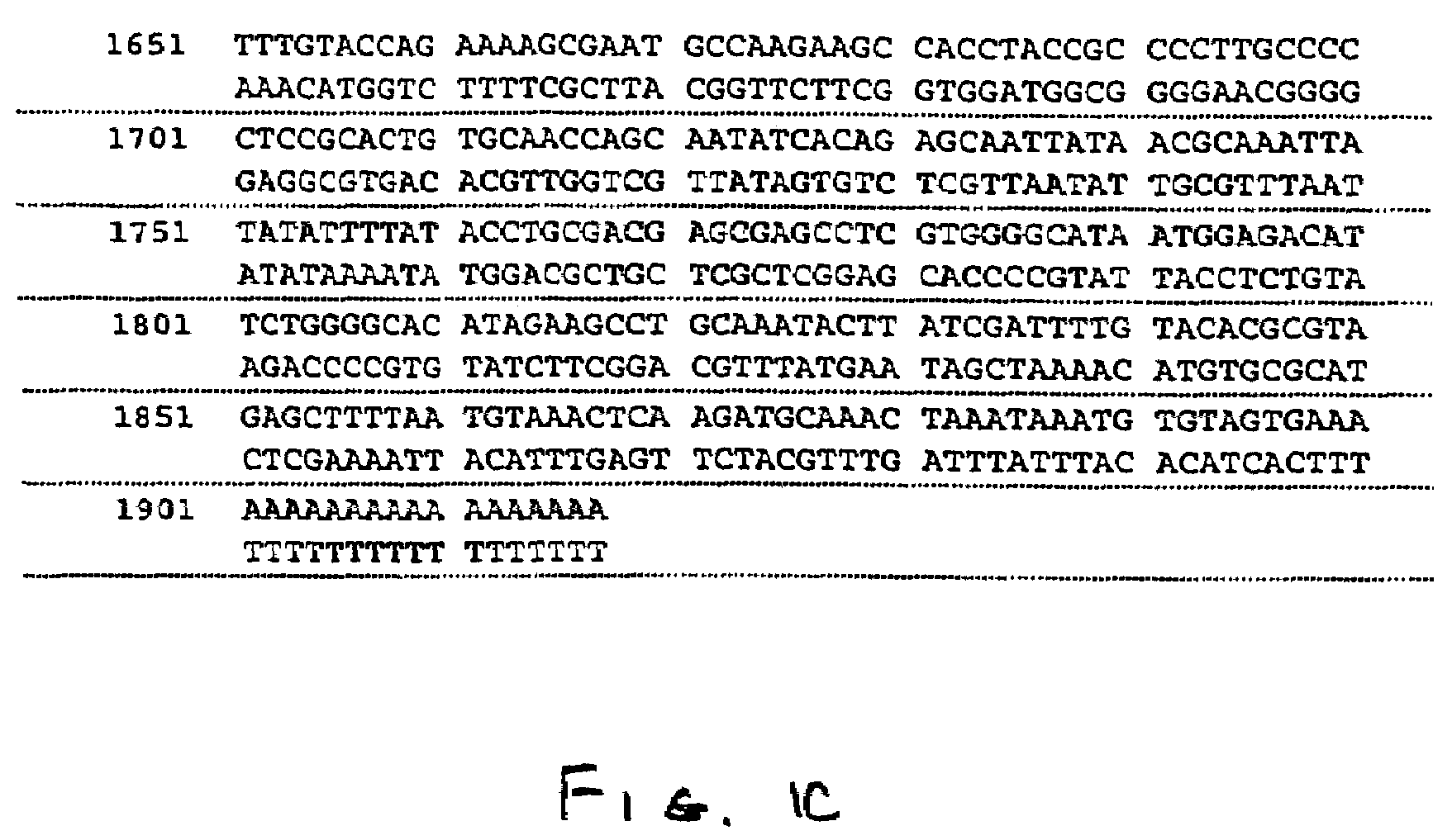Nucleic acids and proteins of insect Or83b odorant receptor genes and uses thereof
a technology of odorant receptor and protein, which is applied in the field of nucleic acids and proteins of insect or83b odorant receptor genes, can solve the problems of affecting the import and export of agricultural products, affecting the safety and effectiveness of insect control products, and affecting the quality of life of insects, etc., to achieve rapid and efficient discovery, strong and selective approaches to combat pest insects, and safe and effective insect control products
- Summary
- Abstract
- Description
- Claims
- Application Information
AI Technical Summary
Benefits of technology
Problems solved by technology
Method used
Image
Examples
Embodiment Construction
[0064]Described herein is a strategy to search for novel Or83b odorant receptor genes in insect genomes. This strategy has been successful in identifying novel insect odorant receptor genes encoding Or83b odorant receptor proteins related to the Or83b receptor of Drosophila melanogaster. These new odorant receptor genes, which encode highly conserved proteins among various insect species, constitute very useful targets for pest control agents.
[0065]The present invention thus provides proteins encoded by and nucleotide sequences of insect Or83b odorant receptor genes. In a specific embodiment, the invention relates to the proteins encoded by and the nucleic acid sequence of an Or83b odorant receptor gene from C. capitata, H. zea, A. gambiae, or S. americana. The invention further relates to fragments and other derivatives and analogs of such Or83b odorant receptor proteins. In a preferred embodiment, these proteins, fragments and other derivatives and analogs are not the D. melanogas...
PUM
| Property | Measurement | Unit |
|---|---|---|
| pH | aaaaa | aaaaa |
| pH | aaaaa | aaaaa |
| length | aaaaa | aaaaa |
Abstract
Description
Claims
Application Information
 Login to View More
Login to View More - R&D
- Intellectual Property
- Life Sciences
- Materials
- Tech Scout
- Unparalleled Data Quality
- Higher Quality Content
- 60% Fewer Hallucinations
Browse by: Latest US Patents, China's latest patents, Technical Efficacy Thesaurus, Application Domain, Technology Topic, Popular Technical Reports.
© 2025 PatSnap. All rights reserved.Legal|Privacy policy|Modern Slavery Act Transparency Statement|Sitemap|About US| Contact US: help@patsnap.com



